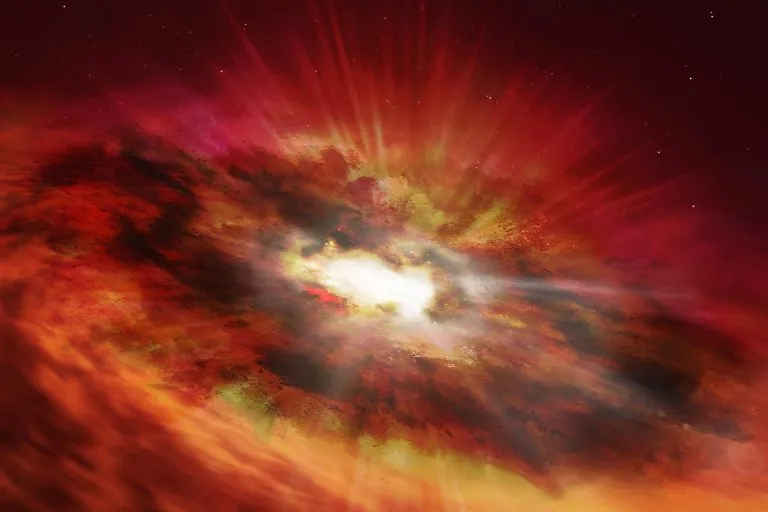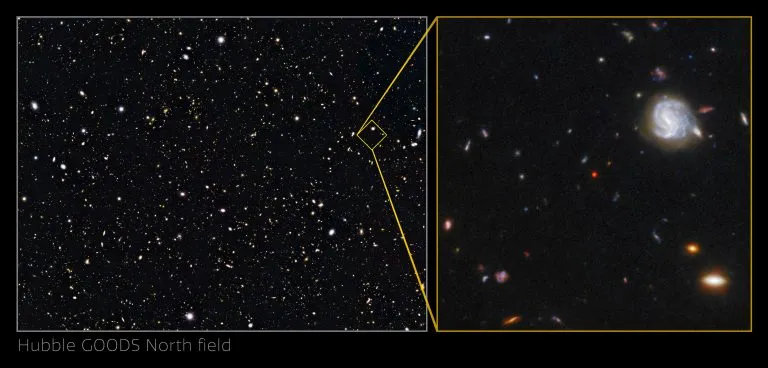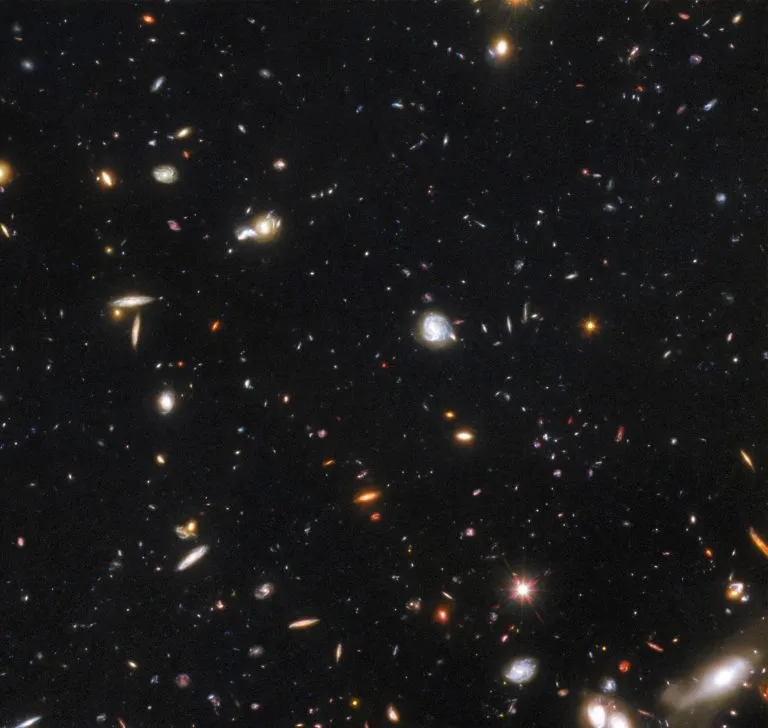An international team of astronomers has discovered a unique object in the distant early universe, which is a key link between star forming galaxies and the emergence of the earliest supermassive black holes It was discovered using archived data from NASA / ESA Hubble Space Telescope and other space and ground observatories. This object is the first object discovered so early in the history of the universe. It has been lurking in one of the best studied areas in the night sky without being noticed.

Since these objects were discovered just 750 million years after the big bang, astronomers have been trying to understand the emergence of supermassive black holes in the early universe. Theory and computer simulations predict fast-growing black holes in dusty early star forming galaxies, but until now they have not been observed. Now, however, astronomers report the discovery of an object, which they named gnz7q. It is believed to be the first such fast-growing black hole found in the early universe. Hubble archive data from the advanced measurement camera helped the team study compact ultraviolet emissions from black hole accretion disks and determine that gnz7q existed only 750 million years after the big bang.
Seiji Fujimoto, an astronomer at the Niels Bohr Institute at the University of Copenhagen in Denmark and the lead author of the paper describing the discovery, explained: "our analysis shows that gnz7q is the first example of a black hole growing rapidly in the dust core of a galaxy in an era close to the earliest known supermassive black hole in the universe. The properties of the object in the whole electromagnetic band are very consistent with the predictions of theoretical simulation."

Current theories predict that the life of supermassive black holes begins with the dust shrouded core of the "starburst" galaxy that vigorously forms stars, and then expels the surrounding gas and dust into extremely bright quasars. Although they are extremely rare, examples of dusty galaxies and luminous quasars have been detected in the early universe. The research team believes that gnz7q may be the "missing link" between the two types of celestial bodies.
"Gnz7q provides a direct link between these two rare groups and provides a new way to understand the rapid growth of supermassive black holes in the early universe," Fujimoto continued. "Our discovery is a precursor to supermassive black holes we observed in later times."
Although other explanations for the research team's data cannot be completely excluded, the observed characteristics of gnz7q are very consistent with the theoretical prediction. Gnz7q's host galaxy is forming stars at the rate of 1600 solar mass stars a year, and gnz7q itself looks bright at ultraviolet wavelengths, but very dim at X-ray wavelengths. The team explained this - together with the brightness of the host galaxy at infrared wavelengths - that gnz7q hides a fast-growing black hole that is still obscured by the dust core of the accretion disk at the center of the star forming host galaxy.
In addition to gnz7q's significance in understanding the origin of supermassive black holes, this discovery is also noteworthy because it is located in the Hubble great Observatory's traceability deep space survey North Field (Hubble goods north), which is one of the most concerned areas in the night sky.

Gabriel Brammer, another astronomer at the Niels Bohr Institute at the University of Copenhagen, commented: "gnz7q is a unique discovery. It was found at the center of a well-known and well studied sky field - indicating that big discoveries are often hidden in front of you." he is a team member behind this achievement. "Finding gnz7q in a relatively small goods-n survey area is unlikely to be just 'stupid luck'. On the contrary, the universality of this source may actually be much higher than previously thought."
Due to the unique and detailed multi wavelength data set of goods-n, it is possible to find gnz7q hidden in full view of the public. Without this wealth of data, gnz7q can easily be ignored because it lacks the features commonly used to identify quasars in the early universe. The team now hopes to use specialized high-resolution surveys to systematically search for similar objects and use the spectral instruments of NASA / ESA / CSA James Webb Space Telescope to study gnz7q such objects in unprecedented detail.
Fujimoto concluded: "through the James Webb Space Telescope, it will be possible to fully characterize these objects and detect their evolution and basic physics in more detail. Once in normal operation, Webb will be able to decisively determine how common these fast-growing black holes are."